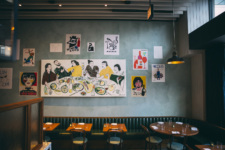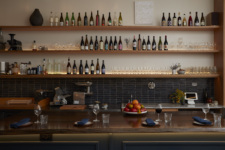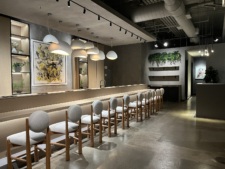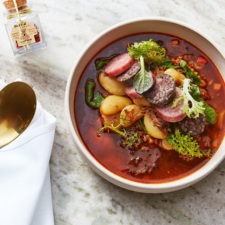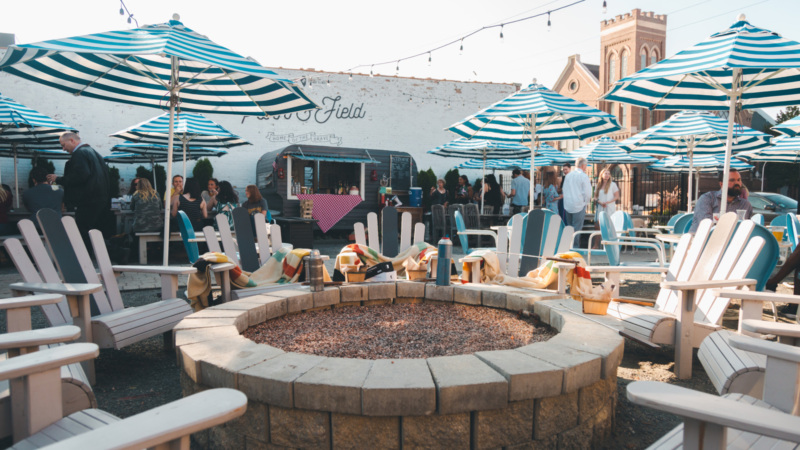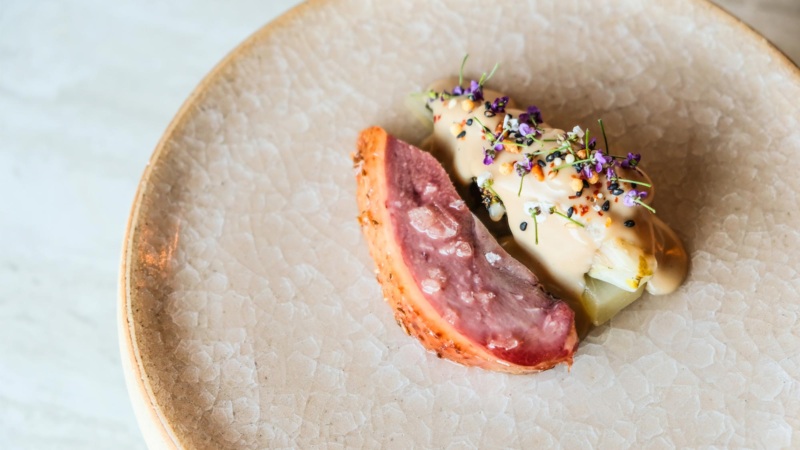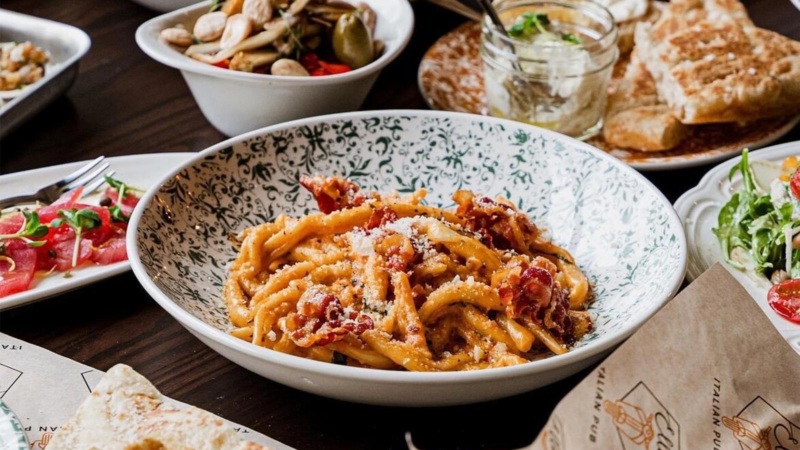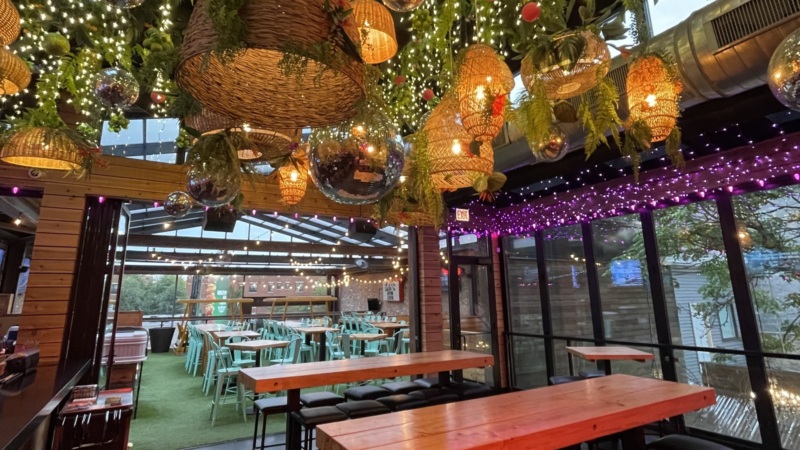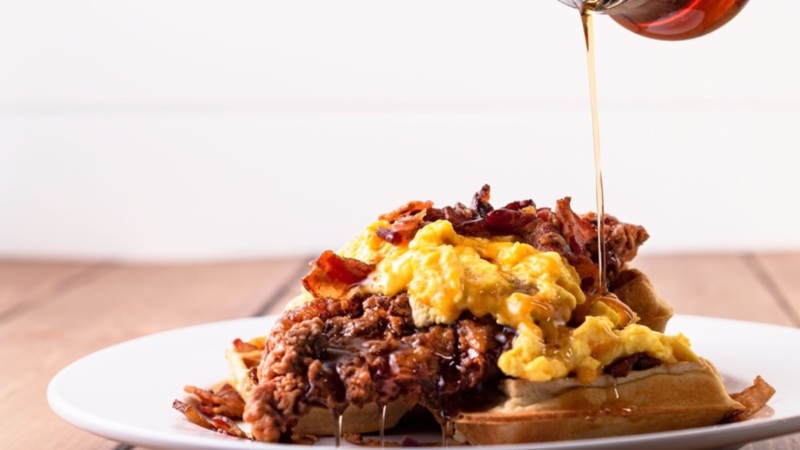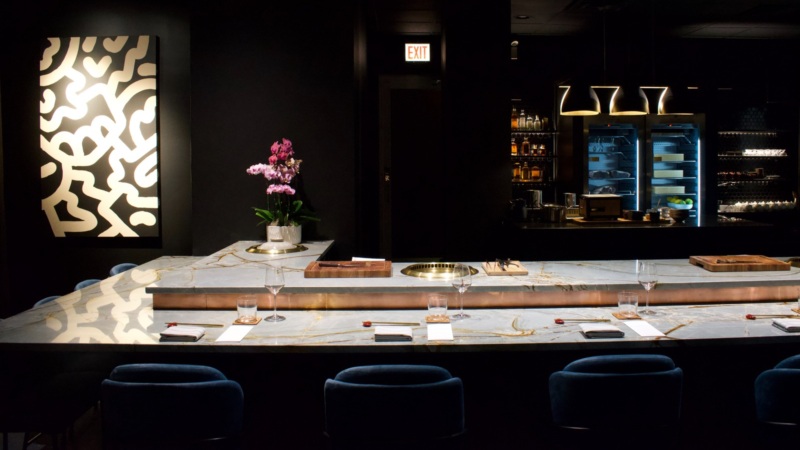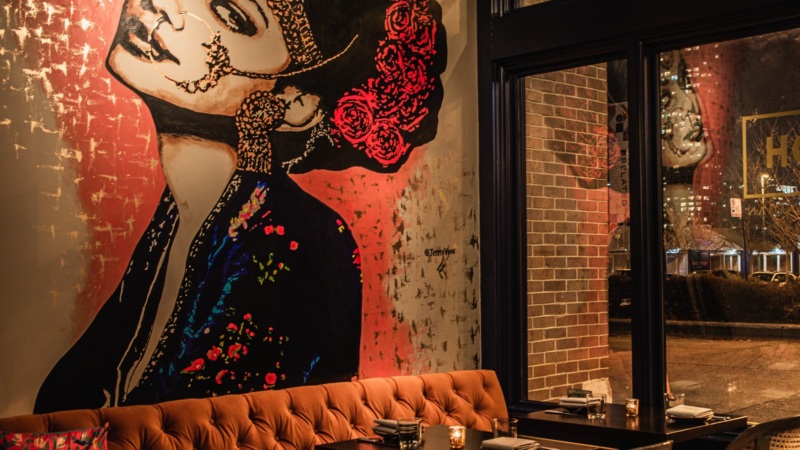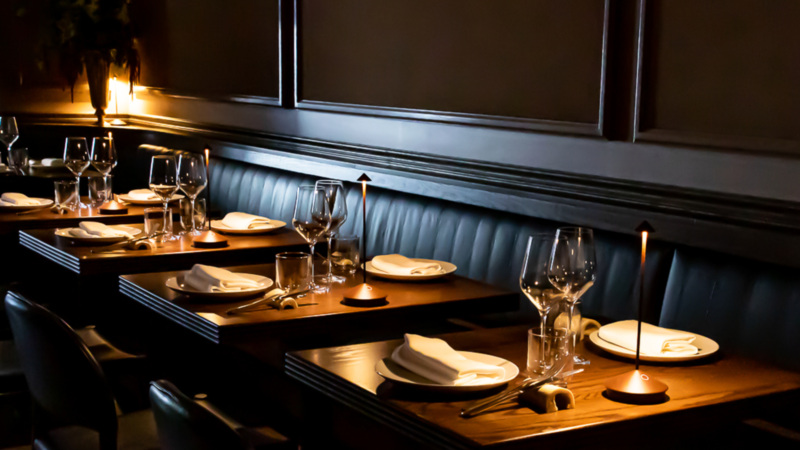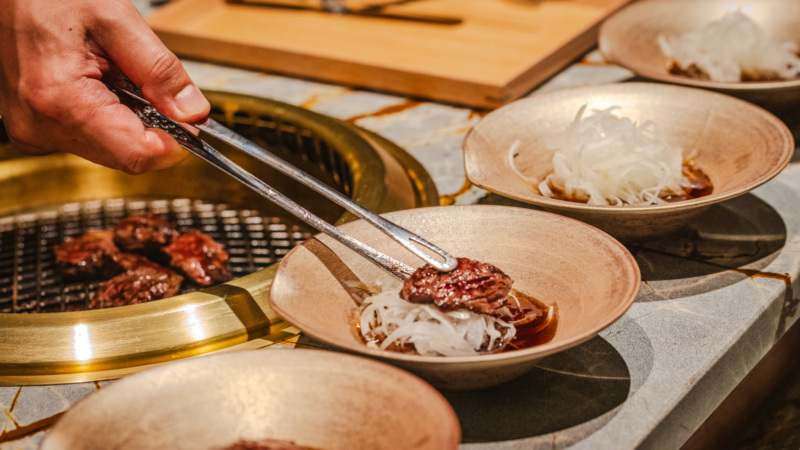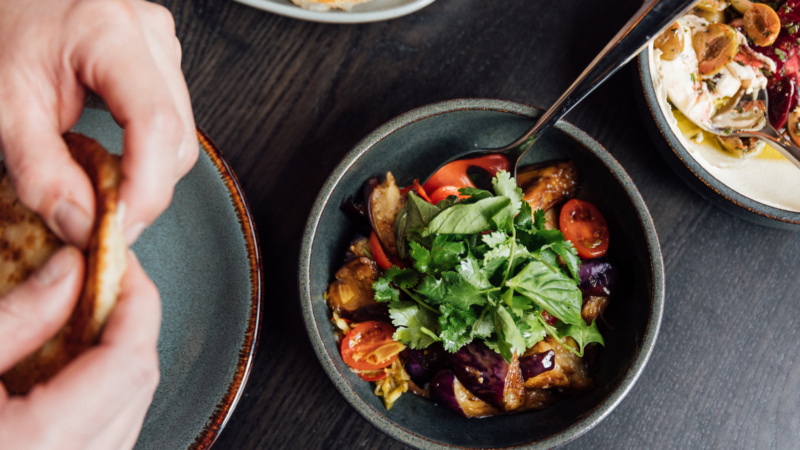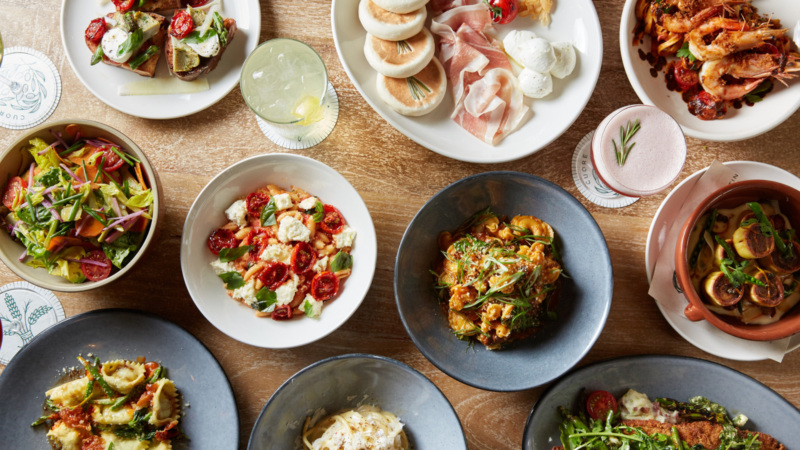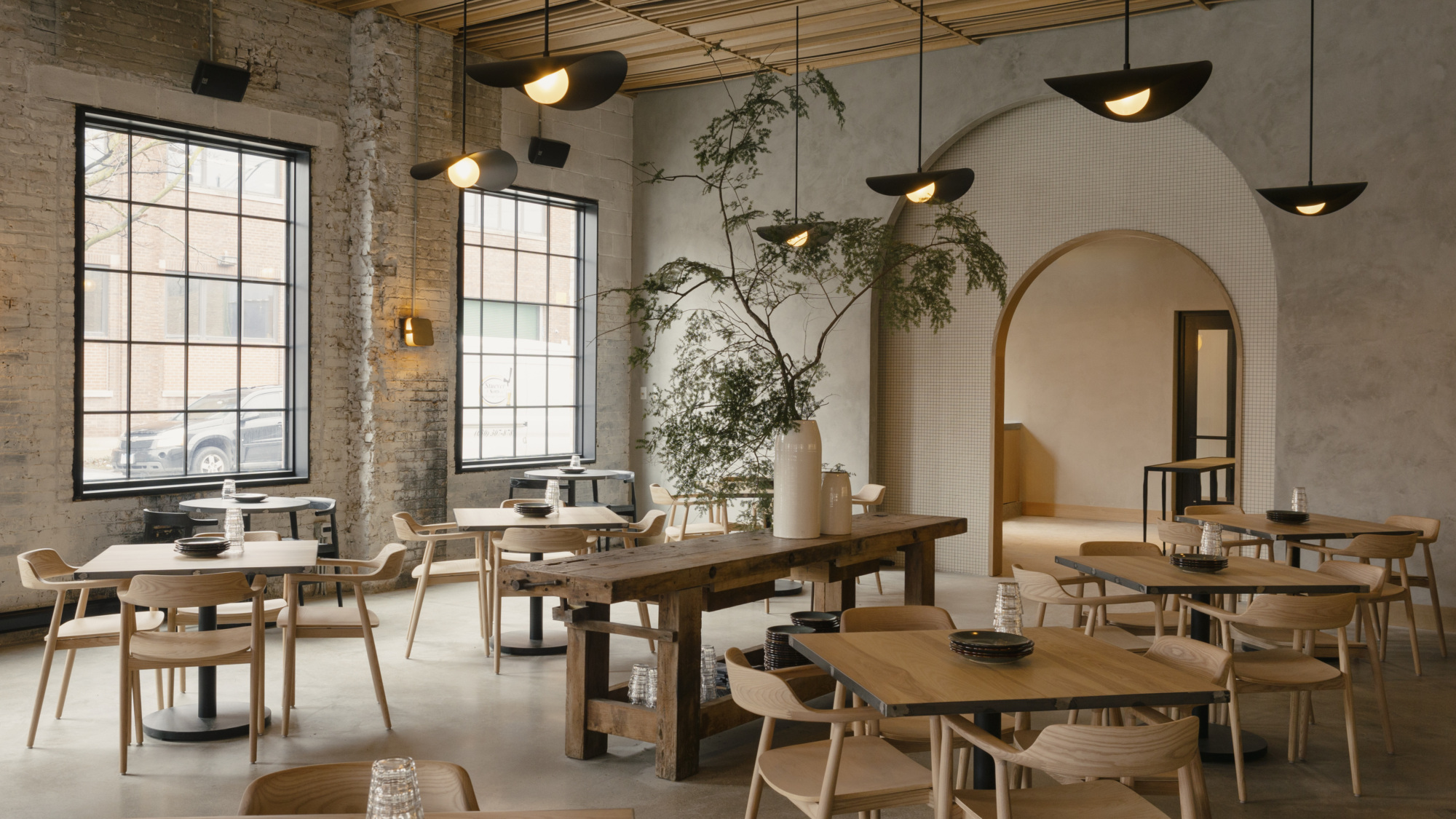
Meet Maxwells Trading, the West Loop’s Newest Cross-Cultural Destination
The idea for Maxwells Trading was simple: Chef and restaurateur Erling Wu-Bower and his partner Josh Tilden wanted to open someplace where they could belly up to the bar, share a few drinks, and throw on some records.
The restaurant (named after Wu-Bower’s son), sits on Carroll near West Fulton Street, but its industrial warehouse exterior gives no hint to what lies within: a jazzy new spot serving delightfully cross-cultural, Asian-inflected fare in a modern, understated space.
Wu-Bower and Tilden were also behind the now-shuttered Pacific Standard Time in River North, which earned them a James Beard nomination. Although PST is no more, Wu-Bower says he still has love for the restaurant, and he remains true to his roots — in more ways than one — with Maxwells Trading’s menu.
Both Wu-Bower and executive chef Christopher Jung are second generation children of immigrants: Jung is Korean and Wu-Bower is half Chinese. Both grew up in the city, and as Wu-Bower puts it, were lucky to be exposed to different cultures and cuisines at a young age. The food at Maxwells, accordingly, is what Wu-Bower describes as “city food for city kids.”
Intrigued? Here’s everything you need to know before visiting.


1. Don’t call it fusion.
The menu is broken into playful categories like “Beginnings,” “Griddle Bread & Dunks,” “Starch,” “Substance, Grilled,” and “In Conclusion.” While the food’s ingredients and inspiration may come from many cultures, Wu-Bower is clear that Maxwells Trading is not a fusion restaurant, preferring instead to describe it as “distinctly American.”
Take, for example, the aforementioned Griddle Bread & Dunks section, which features housemade bread and a variety of “dunks,” or dips, including whipped ricotta and Japanese eggplant. The bread itself is a cross between a Chinese scallion pancake and Indian naan, which Wu-Bower carefully researched and took months to perfect.
The “Substance, Grilled” section has larger dishes like a whole turbot with Swiss chard and kombu-infused beurre blanc, and a showstopping bone-in strip steak. Inspired by classic Korean barbecue presentation, the steak is served sliced alongside lettuce wraps and three different sauces: ssamjang, a thick, spicy Korean dipping sauce; tangerine nuoc cham, a sweeter Vietnamese dipping sauce; and miso bagna cauda. Its sharable format is very much by design: Wu-Bower believes food tastes better when you have to fight with the people around you for the best bite.
It’s not all meat and fish, though. Wu-Bower notes that there are nine vegetarian dishes on the menu, like the grilled carrots served with carrot spoon bread and Steen’s molasses; or the fettuccine with garlic chives, confit potato, and a poached egg. But in a refreshing change of pace, they are not called out as such. They simply exist.


2. The drinks: a small but mighty list.
Wu-Bower calls the restaurant’s wine list “small and mighty.” The 60-plus bottle list was carefully put together by Wu-Bower and the restaurant’s beverage director, Kristina Magro.
The wine list is a balance between Wu-Bower’s tastes, which Magro says lean more toward France, and her own, which veer toward Italy. They prioritized wines that pair well with the food, and the list as a whole carries a similar theme in that it hopscotches across various regions and styles. “We have all of our tastings together and we have a rating scale;” says Magro. “We’re both purists at heart so we tend to lean more towards traditional wine technique, but we have several fun and natty outliers on our list as well,” she says.
There’s also a tight cocktail list with a dedicated martini section, featuring four variations ranging from a 50/50 to a Tuxedo with a twist, along with riffs on classics like an Old Fashioned made with five spice powder. Six out of the seven beers are Midwestern, with the exception of one Spanish cider, and there are three non-alcoholic cocktails labeled simply “tart,” “bitter,” or “fruit.”

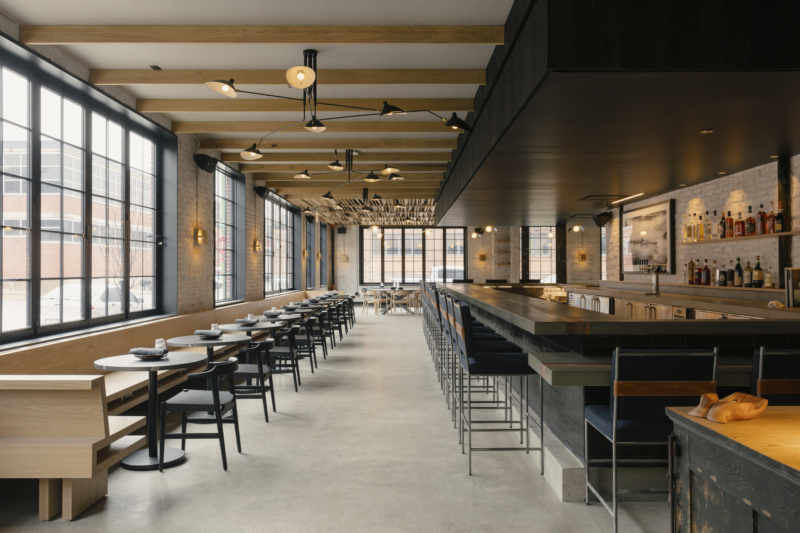
3. About that rooftop…
You might notice the three greenhouses in the works on the roof where fresh ingredients will soon be grown for use in the restaurant. Once weather permits, the chef is excited to take full advantage of the restaurant’s partnership with The Roof Crop, the urban agriculture initiative responsible for said greenhouses. Using locally-grown ingredients is a given for Wu-Bower, who says “the food just tastes better” when there’s a human relationship behind it.

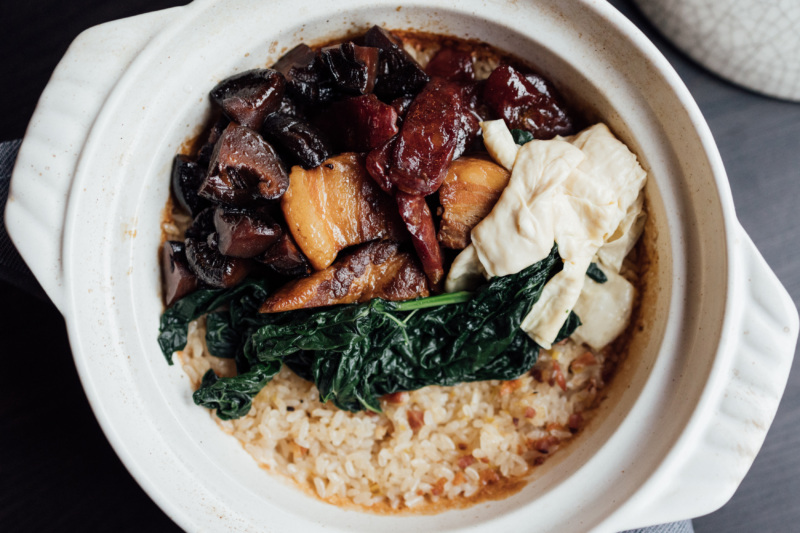
4. The vibe is definitely jazz-forward.
Thanks in large part to its location on Carroll Avenue, the space has its own distinct vibe. “I think we’re always drawn to these warehouse districts,” Wu Bower says. “Via New Orleans or L.A. or the points in between … all these places that we visit on a regular basis to eat, we find ourselves looking for the rare, hidden gems.”
The high ceilings and brick walls are a reminder of the past, but that’s where the industrial vibes end and a more modern feel comes in, with clean-lined wooden tables, large south and west-facing windows, and an open, roomy concept that allows for clear views of the kitchen and bar. Sleek overhanging lamps and subtle wall lights create an intimate feel.
Wu-Bower and Tilden’s original vision of hanging at the bar, enjoying some drinks accompanied by great music, is brought to life through the jazz and soul music playing through the speakers. “I don’t know if we’ll ever actually have a jazz trio in this place,” says Wu-Bower. “But [I wanted it to feel like] a jazz club in early New York. We want people to feel like they’ve discovered something.”
Angela L. Pagán is a Chicago-native journalist with a passion for both food and writing. Read her reports on the fast food industry, food trends, and more here, and see more of her writing here. While you’re at it, give Resy a follow, too.


